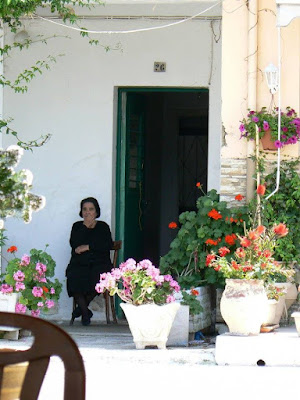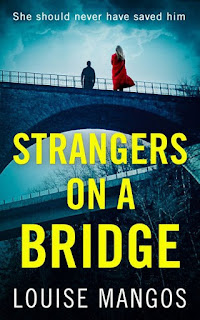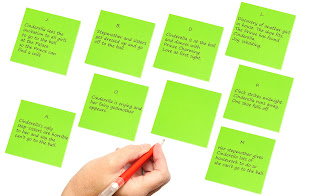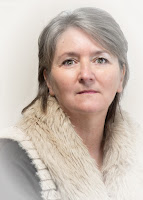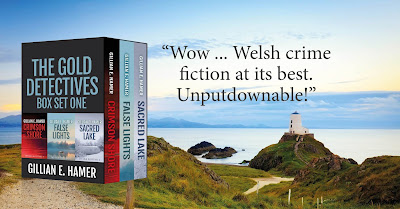By Clare Flynn
Photographs by JD Lewis
Whether you’re a daredevil seat-of-the-pants writer who sits down with a blank page and lets the story unfold, or a meticulous planner and plotter who knows in advance what will happen in every chapter, there are times when a character will surprise you. What? You might say, I’m the author, I’m in control! But that’s not always the case.
Why do characters have a nasty habit of running off on their own - sometimes in a different direction from the one we intended, leaving us lolloping along behind them? Well, it can be a sign that they are living, breathing people who have a clearer idea of their own destiny than the plot structure imposed on them - or it could mean they aren’t yet fully formed.
One way to find out, is to know your characters as well as, or, given that self-knowledge is rarely a strength, better than yourself.
A fundamental element of story, from Shakespeare to Star Trek, is the concept of a hero’s journey. One of my favourite expositions of this is shown in this short clip from Kurt Vonnegut.
So, what are your characters’ journeys? The start point is getting clear on what each character’s role is in the story. The main character or protagonist (MC)? - the central focus of your story - the hero on his or her journey. The antagonist? - whether well-intentioned or plain evil, they are out to foil the MC’s mission. A minor character? - if so, what is their role in the story and relationship to the MC? For the purpose of this post I’m going to focus on the main character - as if you get that wrong you’ve lost your reader.
Exercise 1
Answer these questions about your MC (it’s a good idea to do them for the antagonist and supporting characters too).
· What’s their role in the story?
· What do they yearn for? This is fundamental! It’s what drives them and sends them on their journey
· What do they look like? Whether you include these details in the book or leave them to the reader’s imagination is irrelevant - YOU need to know this - and this goes for all of these questions!
· A brief pen portrait of their personality - just a few sentences
· What’s their occupation?
· Do they have any habits or mannerisms?
· What’s their background? (history, family, location, backstory)
· What are their internal conflicts? What causes their angst? Their dark nights of the soul?
· What are their external conflicts? Who or what are the source of these?
Exercise 2
Once you’ve done that, here’s another exercise. This time write freely in the voice of your character filling in the blanks. Don’t stop to think - just get it down on paper, preferably by hand.
Let me tell you who I am ------
As well as all that, what you really need to know about me is ------
OK confessional time here, what I really want is --------
I’d be able to have exactly what I want if only --------
Don’t tell anyone, but what I dislike most about myself is --------
My life changed forever the day ---------
The worst thing that ever happened to me was ---------
The best moment of my life was -----------
Exercise 3
To get right under the skin of your characters, give them the Spanish Inquisition.
You can use The Proust Questionaire http://hoelder1in.org/Proust/fill_questionnaire.html ,
or any online personality test
or do what I did when I was writing The Alien Corn and needed to reconnect with the characters in the previous book, The Chalky Sea, and use the excellent one JJ Marsh wrote about here, or make up your own.
 I recently did an online course with a university on outlining (I was trying to move from being a seat-of-the-pantser to a plotter). One of the exercises was to fill out a very comprehensive questionnaire in the voice of your main character. Many of the participants found it difficult, if not impossible, to answer as their character rather than as themselves. That’s fine if you’re writing a memoir, a fictionalised account of your own life, or are transplanting yourself into your novel as the main character Hey, why not live vicariously? You too can swing through Amazon jungles or live as a Trappist monk. But in most cases your characters are NOT you and you need to get to know them better than you know yourself.
I recently did an online course with a university on outlining (I was trying to move from being a seat-of-the-pantser to a plotter). One of the exercises was to fill out a very comprehensive questionnaire in the voice of your main character. Many of the participants found it difficult, if not impossible, to answer as their character rather than as themselves. That’s fine if you’re writing a memoir, a fictionalised account of your own life, or are transplanting yourself into your novel as the main character Hey, why not live vicariously? You too can swing through Amazon jungles or live as a Trappist monk. But in most cases your characters are NOT you and you need to get to know them better than you know yourself. Most of the questions in a questionnaire may seem pointless - I’ll never use it in my book, you say. But you’ll be surprised at the gems you uncover that can add colour and shade to your characters. Think of characters as being like icebergs - the biggest part is hidden from view but it’s what gives strength, power and presence. A character who only consists of the words that make it onto the page is going to be thin and insubstantial. We are all what we lived in our pasts - a complex construct of past slights and injuries, compliments and excitements, moments of joy and sadness.
Some of the areas to think about (not an exhaustive list) in forming your characters are -
· What is their backstory?
· Voice and manner
· Tastes
· What do they dream about?
· Quirks and behaviours
· Skills and aptitudes
· Fears and desires
· Strengths and weaknesses
· Formative experiences
· Friends and enemies
My last top tip is, having done all the exercises, print them out and keep these together as a reference document to inform your writing. Or if you are paper averse, save them in a folder where you can easily refer to them as you’re writing. If you ever feel “stuck” a dip back into the folder can produce rich pickings.
 Author of seven novels, Clare Flynn writes historical fiction with a strong sense of time and place and compelling characters.
Author of seven novels, Clare Flynn writes historical fiction with a strong sense of time and place and compelling characters.After a career in international marketing, working on brands from nappies to tinned tuna and living in Paris, Milan, Brussels and Sydney, she ran her own consulting company for 15 years and now lives in Eastbourne where she writes full-time - and can look out of her window and see the sea.
Clare’s latest novel, The Gamekeeper’s Wife, is available in paperback and as an e-book on Amazon http://mybook.to/gamekeeper
Website www.clareflynn.co.uk
Facebook - www.facebook.com/authorclareflynn
Twitter - www.twitter.com/clarefly
Instagram - www.instagram.com/clarefly


